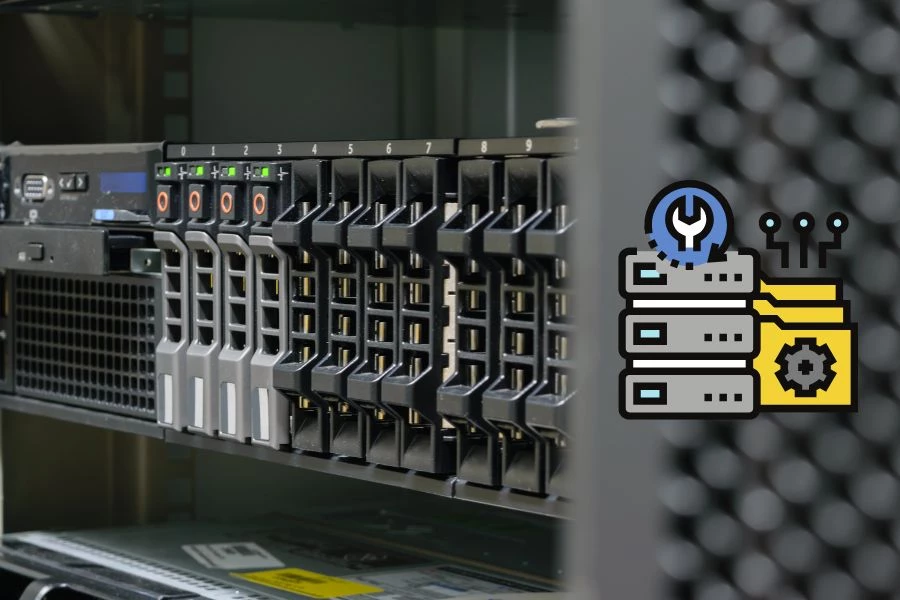
RAID (Redundant Array of Independent Disks) systems serve as a cornerstone of modern data storage infrastructure, combining multiple physical drives into a single logical unit to enhance performance, reliability, and data protection. While RAID configurations offer robust data security through redundancy and improved I/O operations, they can still experience failures due to various scenarios such as hardware malfunctions, controller failures, multiple disk crashes, or human error during maintenance.
These situations often require specialized RAID recovery software, as standard data recovery tools lack the sophisticated capabilities needed to handle complex RAID architectures. Unlike basic recovery utilities, RAID-specific software must understand and process intricate striping patterns, manage parity calculations across multiple drives, support various RAID levels (0, 1, 5, 6, 10, etc.), and reconstruct virtual arrays while maintaining data integrity. This specialized functionality becomes crucial when organizations face potential data loss in their RAID systems, particularly in business-critical environments where downtime and data unavailability can result in significant financial and operational impacts.
Understanding RAID Recovery Challenges
RAID systems can fail in multiple ways, each presenting unique challenges for data recovery. Hardware failures often manifest as drive motor issues, bad sectors, or physical damage to disk components, directly impacting data accessibility. Controller malfunctions can result from firmware corruption, battery backup failures, or hardware deterioration, potentially rendering the entire array inaccessible. Multiple disk failures pose a particularly serious threat, especially when they exceed the array’s redundancy capabilities. Logical errors and corruption can occur due to file system issues, metadata corruption, or improper stripe size calculations, while accidental array deletion through human error during maintenance or configuration can lead to immediate data loss.
When selecting RAID recovery software, several key considerations must be evaluated to ensure successful data retrieval. The software must support various RAID levels and configurations, from basic RAID 0 and 1 to more complex RAID 5, 6, and nested arrays. Comprehensive file system support is essential, including compatibility with common formats like NTFS, EXT3/4, and specialized systems. Recovery success rate is a critical factor, determined by the software’s ability to handle severe corruption and complex configurations. Time efficiency becomes crucial in business environments where downtime must be minimized, while the required technical expertise level influences both the recovery process’s success and the resources needed to operate the software effectively.
Top RAID Recovery Software Solutions

DiskInternals RAID Recovery stands out as a comprehensive solution for enterprise-level RAID recovery needs. The software excels in handling complex RAID configurations through its advanced virtual RAID assembly capability, which allows users to reconstruct arrays even when the original configuration is unavailable. In addition, the free raid data recovery software covers all major RAID levels (0, 1, 5, 6, 10, and above), making it a versatile choice for various storage environments.
Key Features
- Universal RAID level support with automatic configuration detection.
- Sophisticated virtual RAID assembly for complex reconstructions.
- Remote recovery capabilities for distributed environments.
- Deep scan technology for thorough data analysis.
- Support for both Windows and Linux file systems.
Advantages
- Powerful reconstruction algorithms ensure high recovery success rates.
- Comprehensive file system support including NTFS, FAT, ReFS, and ext2/3/4.
- Professional-grade technical support.
- Ability to handle severely damaged arrays.
- Preview capability before recovery.
Limitations
- Complex interface requires technical expertise.
- Resource-intensive scanning process.
UFS Explorer offers a balanced approach to RAID recovery, combining powerful features with user accessibility. Its standout feature is the automatic RAID parameter detection, which significantly simplifies the initial recovery setup process. The software is particularly effective for small to medium-sized businesses requiring reliable but straightforward recovery solutions.
Key Features
- Intelligent RAID parameter detection and configuration.
- Support for multiple storage formats and file systems.
- Built-in hex editor for manual data analysis.
- Quick scanning and preview capabilities.
- Cross-platform compatibility.
Advantages
- Intuitive interface suitable for various skill levels.
- Flexible recovery options for different scenarios.
- Regular updates and maintenance.
- Efficient processing of large volumes.
- Good value for feature set.
Limitations
- Trial version has significant functionality restrictions
- Demanding hardware requirements for optimal performance
- Limited advanced customization options
RAID Reconstructor focuses specifically on RAID 5 recovery scenarios, offering specialized tools and optimizations for this common RAID configuration. While its scope is more limited than comprehensive solutions, it excels in its targeted functionality with fast scanning speeds and efficient recovery processes.
Key Features
- Optimized RAID 5 recovery algorithms.
- Direct raw data access capabilities.
- Automated stripe size detection.
- Built-in integrity checking.
- Sector-level analysis tools.
Advantages
- Rapid scanning and analysis of RAID 5 arrays.
- Comprehensive technical support included.
- Straightforward recovery workflow.
- Regular pattern recognition for faster processing.
- Cost-effective for specific RAID 5 needs.
Limitations
- Windows-only platform support.
- Limited to RAID 5 and similar configurations.
- Basic interface may lack advanced options.
- Not suitable for complex RAID setups.
Comparative Analysis
When evaluating these solutions:
- DiskInternals RAID Recovery is best suited for enterprise environments with complex RAID configurations and critical data recovery needs.
- UFS Explorer offers the best balance of features and usability for small to medium businesses.
- RAID Reconstructor is ideal for organizations primarily using RAID 5 configurations who need a cost-effective, specialized solution.
The choice between these options should be based on:
- Specific RAID configuration requirements.
- Technical expertise available.
- Budget constraints.
- Recovery time requirements.
- Platform compatibility needs.
Comparison Criteria
When evaluating RAID recovery software, several critical criteria must be considered to ensure the best selection for specific needs. Technical capabilities form the foundation, encompassing comprehensive RAID level support, broad file system compatibility, diverse recovery methods, and robust data preview features that allow verification before full recovery. Usability factors are equally important, focusing on interface intuitiveness, learning curve accessibility, documentation comprehensiveness, and quality of technical support, as these elements significantly impact recovery efficiency and success rates.
Performance metrics must be carefully evaluated, including scan speed efficiency, demonstrated recovery success rates, optimal system resource utilization, and the ability to handle large arrays effectively without compromising stability. Cost considerations play a crucial role in the final decision, with attention to flexible licensing options, diverse price tiers accommodating different business scales, potential return on investment based on recovery capabilities, and the availability of free trials for thorough testing before commitment. These criteria together provide a comprehensive framework for selecting the most appropriate RAID recovery solution based on specific organizational requirements and constraints.
Best Software by Scenario

When selecting RAID recovery software, different scenarios demand specific solutions tailored to unique requirements. For enterprise environments, DiskInternals RAID Recovery emerges as the optimal choice, offering robust capabilities for managing large arrays, ensuring the recovery of mission-critical data, and handling complex multiple RAID configurations with its comprehensive feature set and advanced reconstruction algorithms.
Small businesses will find UFS Explorer particularly appealing, providing an excellent balance of affordability and functionality, with user-friendly interfaces suitable for basic RAID configurations and occasional recovery needs, while still maintaining professional-grade recovery capabilities. Professional service providers, who must handle diverse client requirements, benefit most from maintaining licenses for multiple tools, typically combining DiskInternals for complex enterprise scenarios with UFS Explorer for general cases, and specialized tools like RAID Reconstructor for specific RAID configurations, allowing them to efficiently address varied recovery scenarios while optimizing cost-effectiveness through a multi-tool approach.
Recovery Best Practices
Successful RAID data recovery requires a systematic approach encompassing thorough preparation, careful execution, and comprehensive post-recovery procedures. The preparation phase begins with a detailed initial assessment of the failure scenario, creating byte-level backups of all accessible drives to prevent further data loss, selecting appropriate recovery software based on specific RAID configurations, and ensuring all necessary hardware requirements are met, including sufficient storage space for recovered data.
During the recovery process, it’s crucial to follow a structured step-by-step approach, documenting each action taken, avoiding common pitfalls such as attempting recovery on original drives or skipping verification steps, and maintaining detailed logs of all procedures and configurations used. Post-recovery steps are equally critical, involving thorough data verification to ensure integrity, careful rebuilding of the array if necessary, implementing preventive measures such as monitoring systems and hardware maintenance schedules, and establishing a robust backup strategy to prevent future data loss scenarios, including regular testing of backup and recovery procedures to ensure their effectiveness.
Conclusion
The landscape of RAID recovery software offers diverse solutions for varying needs, with DiskInternals RAID Recovery leading for enterprise environments, UFS Explorer excelling in small business scenarios, and specialized tools like RAID Reconstructor serving specific configurations. As storage technologies evolve, future trends in RAID recovery are moving toward more automated processes, improved machine learning-based detection algorithms, and enhanced support for emerging storage technologies and larger array capacities.
The importance of proper RAID maintenance cannot be overstated – regular monitoring, proactive hardware replacement, and systematic backup procedures significantly reduce the risk of catastrophic data loss and simplify recovery when needed. When selecting RAID recovery software, organizations should carefully evaluate their specific requirements, including array size, complexity, budget constraints, and in-house technical expertise, while considering both immediate recovery needs and long-term scalability. The best solution will ultimately depend on balancing these factors while ensuring comprehensive support for their particular RAID configurations and recovery scenarios.








